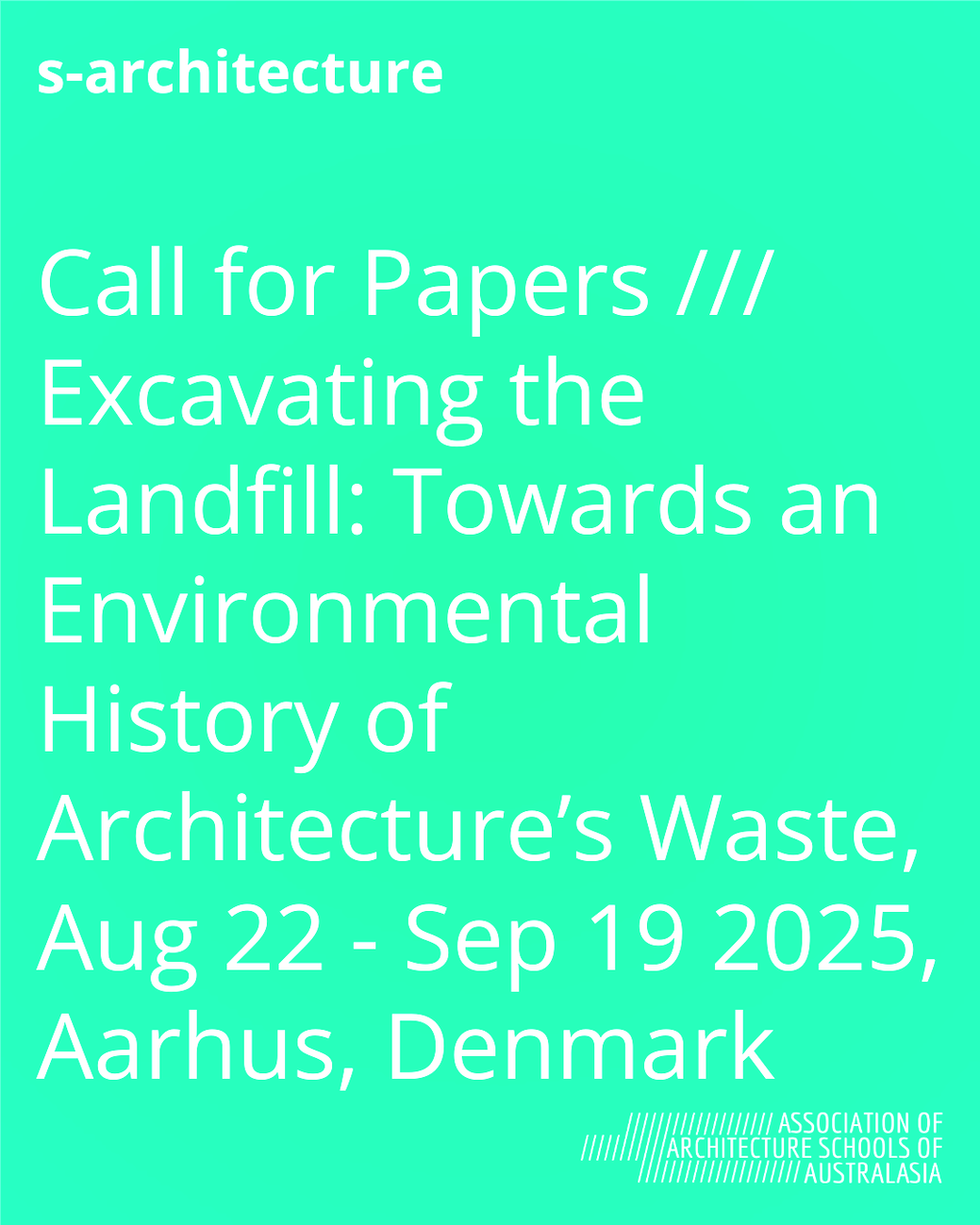Call for Papers /// Excavating the Landfill: Towards an Environmental History of Architecture’s Waste, Aug 22 - Sep 19 2025, Aarhus, Denmark
- s-architecture

- Aug 25
- 3 min read

Excavating the Landfill: Towards an Environmental History of Architecture’s Waste
Aug 22 - Sep 19 2025
Aarhus, Denmark
Adam Przywar adam.przywara@unifr.ch
Call for Papers
Session 'Excavating the Landfill: Towards an Environmental History of Architecture’s Waste' at EAHN 2026 Aarhus, 9th Biennial Conference
Sumbission deadline: 19 September 2025
Session Chairs: Kim Förster, The University of Manchester, kim.forster@manchester.ac.uk; Dr. Adam
Przywara, University of Fribourg, Switzerland, adam.przywara@unifr.ch
More infromation: https://eahn.org/2025/05/eahn-9th-biennial-conference-aarhus-2026/
The Trümmerberge in post-war Germany, Crosby Beach outside Liverpool, Leslie Spit in Lake Ontario near Toronto and Fresh Kills on Staten Island in New York City are paradigmatic examples of the construction and demolition waste (CDW) landfills of the 20th century that characterise the modern cityscape. These landforms are a unique material record and expression of architectural production. Yet despite growing academic interest in extraction, consumption and waste in architecture and urban studies, it is surprising that the history of landfills has yet to be unearthed.
Over the past decades, architectural historians have demonstrated significant engagement with the concept of waste and wasteland, facilitating their transformation into productive properties throughout pre-modern Europe (Di Palma, 2014) and dealing with deindustrialized sites resulting from C20 capitalist and socialist industrialism (Hauser, 2001). This panel aims to collect analyses that emphasizes the historical role of the architectural profession and the architecture industry regarding waste, both its generation and the creation of landfills at the end of the product chain. Within urban contexts, scholars have elucidated the ways in which built environment has become involved in existing processes of wasting (Labban, 2019). By drawing theoretical frameworks that advocate for a critical examination of the negative conditions of architecture (Cairns and Jacobs, 2014), we seek to foster a deeper understanding of architecture and waste.
CDW has long been a defining feature of urban development (Foster and Schopf, 2017). Practices such as earthworks, backfilling, land reclamation, river regulation, and landfilling contribute to the creation of environments with unique historical contexts that necessitate analysis in relation to the histories of building that prompted these material flows. Simultaneously, landfills across time and space exhibit distinct material, spatial, technological, social and economic dimensions, which may offer a productive and optimistic perspective on the reciprocal landscapes (Hutton, 2018) of building materials and wasting. Fostering a historical understanding of CDW is crucial for critically contextualizing the contemporary challenges posed by landfills contaminated for example with asbestos and polychlorinated biphenyls (PCBs), or, in the most extreme, the construction of repositories designed to contain the demolition waste generated by decommissioned nuclear power plants.
We invite proposals that investigate the architectural history of landfills from the onset of the Industrial Revolution to the present day. We seek contributions that examine the material, social, cultural, political, and economic dimensions associated with the deposition of construction industry waste within the landscape. Additionally, we are particularly interested in papers that offer insights into historiographical methods designed to incorporate the study of landfills into broader disciplinary discussions.
s-architecture is intended for scholars of Architecture (academe, practice, students, and the public). The list posts scholarship and grant opportunities, academic jobs, calls for papers, notices of conferences which will be of interest to academic staff, postgraduate students, and those in the profession with a scholarly turn of mind.
This blog/email and any attachments are confidential and intended solely for the recipient(s) listed. If you are not the intended recipient, please notify the sender immediately and delete this email. Any unauthorised review, use, disclosure, or distribution is strictly prohibited. While we take precautions to protect against viruses and malware, we cannot guarantee that this email is free from harmful elements. The views expressed in this email do not necessarily reflect those of s-architecture or the Association of Architecture Schools of Australasia (AASA).



